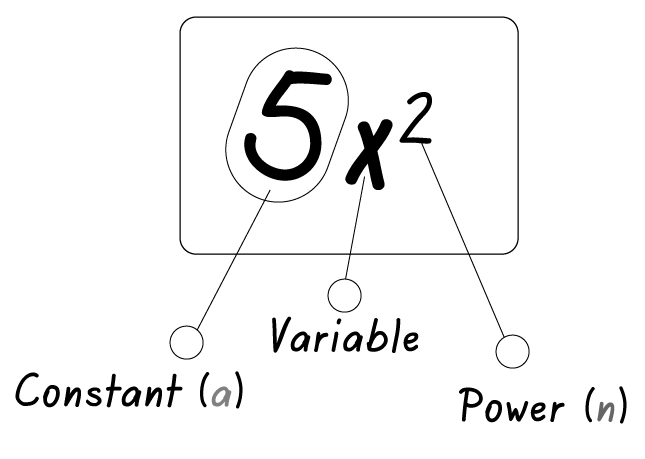Differentiate – x^(1/2)
Answer

Answer
Differentiation of a - x^{1/2}
To differentiate the expression - x^{1/2} with respect to x, we can use the power rule of differentiation. This rule states that for any constant coefficient and power exponent, we can differentiate the term by bringing down the power exponent as the new coefficient and reducing the power exponent by 1.
The mathematical expression for differentiation is as follows:
\frac{d}{dx}(- x^{1/2})
Using the power rule, we differentiate the term by bringing down the power exponent and reducing it by 1:
\frac{d}{dx}(- x^{1/2}) = \frac{1}{2}(-1)x^{1/2-1}
Simplifying the expression gives us:
\frac{d}{dx}(- x^{1/2}) = -\frac{1}{2}x^{-1/2}
Therefore, the derivative of - x^{1/2} with respect to x is -\frac{1}{2}x^{-1/2}
You can also differentiate coefficient of x in the following form
Common functions
7
6x
x^{1/2}
2x^2
Exponential functions
-e^{-\frac{12}{7x}}
-3e^{2x}
Trigonometric functions
4 \sin (x)
-\cos(3x)
Logarithmic functions
4In9x
1. Find the derivative of the function -2x^{-\frac{1}{2}}.
Solution:
To find the derivative of a function in the form f(x) = ax^n, where a and n are constants, we use the power rule. The derivative is given by:
f'(x) = n \cdot a \cdot x^{n-1}.
Applying this rule to the given function, we have:
f'(x) = -\frac{1}{2} \cdot -2 \cdot x^{-\frac{1}{2}-1}</p><p>= x^{-\frac{3}{2}}.
Therefore, the derivative of -2x^{-\frac{1}{2}} is
x^{-\frac{3}{2}}.
2. Determine the derivative of e^{x}.
Solution:
The derivative of e^{x} is itself, as the derivative of
e^{x} is e^{x}.
This is a unique property of the exponential function e^{x}.
Therefore, the derivative of e^{x} is
e^{x}.
3. Calculate the derivative of 4\cos(9x).
Solution:
By applying the chain rule and derivative of cosine function, we have:
f'(x) = -4 \cdot 9 \sin(9x) = -36 \sin(9x).
Therefore, the derivative of 4\cos(9x) is
-36 \sin(9x).
4. Find the derivative of -3e^{\frac{8}{5}x}.
Solution:
Similarly to the derivative of e^{x}, the derivative of e^{\frac{8}{5}x} is itself times the constant \frac{8}{5}:
f'(x) = -3 \cdot \frac{8}{5} e^{\frac{8}{5}x} = -\frac{24}{5} e^{\frac{8}{5}x}.
Therefore, the derivative of -3e^{\frac{8}{5}x} is
-\frac{24}{5} e^{\frac{8}{5}x}.
5. Differentiate the function 4\sin(2x).
Solution:
Using the chain rule and derivative of the sine function, we get:
f'(x) = 4 \cdot 2 \cos(2x)= 8 \cos(2x).
Therefore, the derivative of 4\sin(2x) is
8\cos(2x).
1. \frac{d}{dx}\left(-2x^{-\frac{1}{2}}\right) = x^{-\frac{3}{2}}
2. \frac{d}{dx}\left(-e^x\right) = -e^x
3. \frac{d}{dx}\left(4\cos(9x)\right) = -36\sin(9x)
4. \frac{d}{dx}\left(-3e^{\frac{8}{5}x}\right) = -\frac{24}{5}e^{\frac{8}{5}x}
5. \frac{d}{dx}\left(5\ln x\right) = \frac{5}{x}
6. \frac{d}{dx}\left(2x^3\right) = 6x^2
7. \frac{d}{dx}\left(9e^{-2x}\right) = -18e^{-2x}
8. \frac{d}{dx}\left(7\sin(2x)\right) = 14\cos(2x)
9. \frac{d}{dx}\left(-4e^{5x}\right) = -20e^{5x}
10. \frac{d}{dx}\left(3\ln(4x)\right) = \frac{3}{x}
11. \frac{d}{dx}\left(-5\cos(3x)\right) = 15\sin(3x)
12. \frac{d}{dx}\left(6e^{-4x}\right) = -24e^{-4x}
13. \frac{d}{dx}\left(2\sin(5x)\right) = 10\cos(5x)
14. \frac{d}{dx}\left(8e^{2x}\right) = 16e^{2x}
15. \frac{d}{dx}\left(4\ln(3x)\right) = \frac{4}{x}
Sample Expressions
For best result write
1 as 1
-1 as -1
x as x
-x as -x
x^{1/2} as x^(1/2)
x^{-1/2} as x^-(1/2)
-x^{1/2} as - x^(1/2)
-x^{-1/2} as - x^-(1/2)
-2x as -2x
2x^2 as 2x^2
-2x^2 as -2x^2
2x^{1/2} as 2x^(1/2)
2x^{-1/2} as 2x^-(1/2)
-2x^{1/2} as -2x^(1/2)
-2x^{-1/2} as -2x^-(1/2)
2x^{-1} as 2x^-1
-2x^{-1} as -2x^-1
-x^{-1} as -x^-1
x^{-1} as x^-1
x^2 as x^2
-x^2 -x^2
-x^{-2} -x^-2
2x as 2x
e^x as e^x
-e^x as -e^x
-e^{-x} as -e^-x
e^{2x} as e^(2x)
e^{-2x} as e^-(2x)
-e^{2x} as -e^-(2x)
-e^{-2x} as e^-(2x)
e^{8/5x} as e^(8/5x)
e^{-8/5x} as e^-(8/5x)
-e^{8/5x} as -e^-(8/5x)
-e^{-8/5x} as -e^-(8/5x)
3e^x as 3e^x
3e^{-x} as 3e^-x
-3e^x as -3e^x
-3e^{-x} as -3e^-x
3e^{2x} as 3e^(2x)
3e^{-2x} as 3e^-(2x)
-3e^{2x} as -3e^(2x)
-3e^{-2x} as -3e^(-2x)
3e^{8/5x} as 3e^(8/5x)
3e^{-8/5x} as 3e^(-8/5x)
-3e^{8/5x} as -3e^(8/5x)
-3e^{-8/5x} as -3e^(-8/5x)
-\cos(x) as -cos(x)
4\sin(x) as 4 sin(x)
-\tan(3x) - tan(3x)
